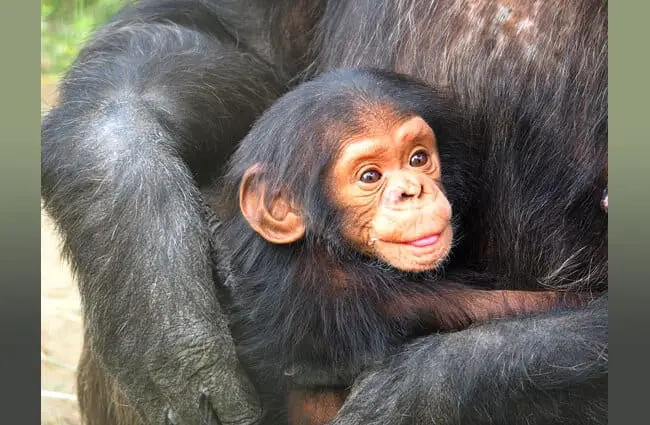

Sandel proposes that same-sex attachments such as those seen among chimpanzees existed in our species prior to the emergence of opposite-sex pair bonds with mates. Previous research may have failed to categorize such behaviors as indicative of pair bonding, Sandel said, because chimpanzees also engage in social behaviors with non-partners in their larger social groups, similar to how humans form friendships with both their mates and others in their communities. Several indicators of emotional connection can be observed in same-sex relationships between male chimpanzees, including evidence of reduced stress levels, behaviors specific to interactions with that partner, and possibly jealousy if a partner engages in grooming activities with individuals outside the pair. But what if pair bonds do occur in some of our ape relatives, and we just overlooked them?" "So biological anthropologists have assumed that whatever led to pair bonds in humans must have something to do with other uniquely human traits, such as walking upright, or having infants with huge brains, or hunting, or making fire. "Part of the evolutionary puzzle is that our closest living relatives, the great apes, including chimpanzees and bonobos, do not form enduring bonds with their mates," Sandel said. Chimpanzees, humans' closest relative, do not pair bond with their mates, but adult males of the species form same-sex bonds lasting as long as 13 years. In a paper published in the journal Evolutionary Anthropology, anthropology professor Aaron Sandel cites primate research-including his own decade-long studies of chimpanzees in Kibale National Park, Uganda-to propose instead that this behavior evolved in humans from same-sex pair bonding already present in a common ancestor of humans and chimpanzees.Ī pair bond is a cooperative relationship between nonrelated adults that remains stable over time and includes an emotional connection, rather than being merely transactional. Feeding outside means that animal care staff can spread out diets ensuring each chimpanzee gets their share.The prevailing explanation of heterosexual pair bonding and romantic love in humans is that it evolved from the mother-infant bond present in many mammals. The chimpanzees receive their diets mostly outdoors either in their habitat or on a trough (like a table) outside of their habitats.The labels help staff weigh out and distribute the diets. Each chimpanzee troop has a labeled bucket marked with the number of family members.She does this by looking at caloric intake and considering things like age and activity level. Chimp Haven’s veterinarian helps decide what each chimp group eats to maintain a happy and healthy colony.Last year the colony went through 200,000 pounds of produce! How many pounds of produce do you think your family ate last year?.The first time the colony received it they didn’t know what it was! It became a resident favorite once they realized it was edible.

The chimpanzees may receive novel fruit treats like kiwi.Chimp Haven sources local seasonal produce, and also grows its own with fruit trees and a greenhouse.The chimpanzees don’t get human treats like pizza and ice cream in their diets, but they may receive sugar-free popsicles or natural fruit snacks.At Chimp Haven the chimpanzee diet is made up of chow (a chimp protein biscuit), leafy greens (like kale), non-leafy greens (like cucumbers), starches (like potatoes), fruits (like bananas!), forage (like nuts and seeds), and sometimes food enrichment.At Chimp Haven, chimpanzees receive a nutritional diet that a team of animal care staff prepare each day with lots of chopping and measuring!.Chimpanzees are omnivores, which means they eat plants and animals.Chimpanzees eat a wide variety of foods in the wild.


 0 kommentar(er)
0 kommentar(er)
